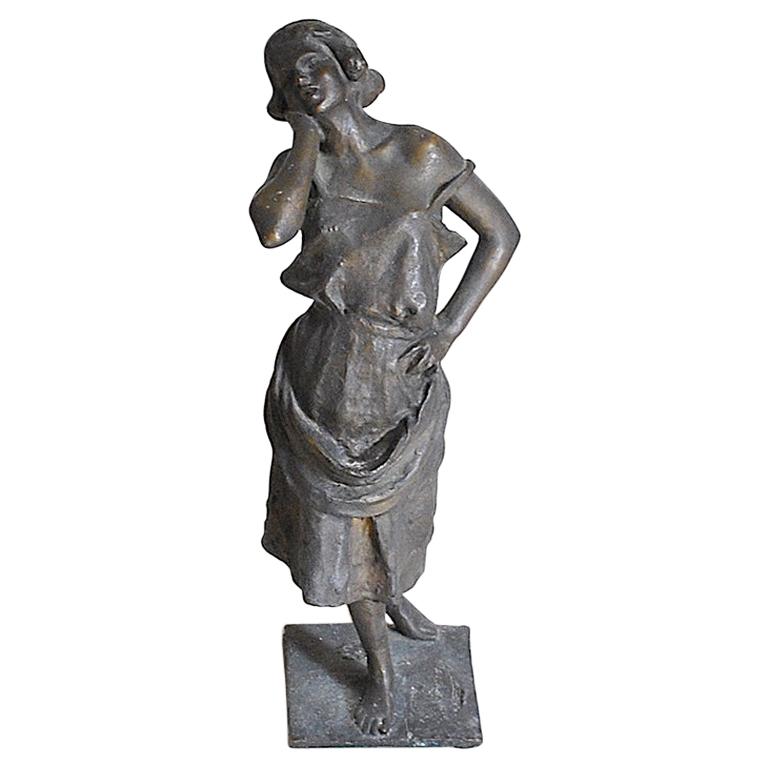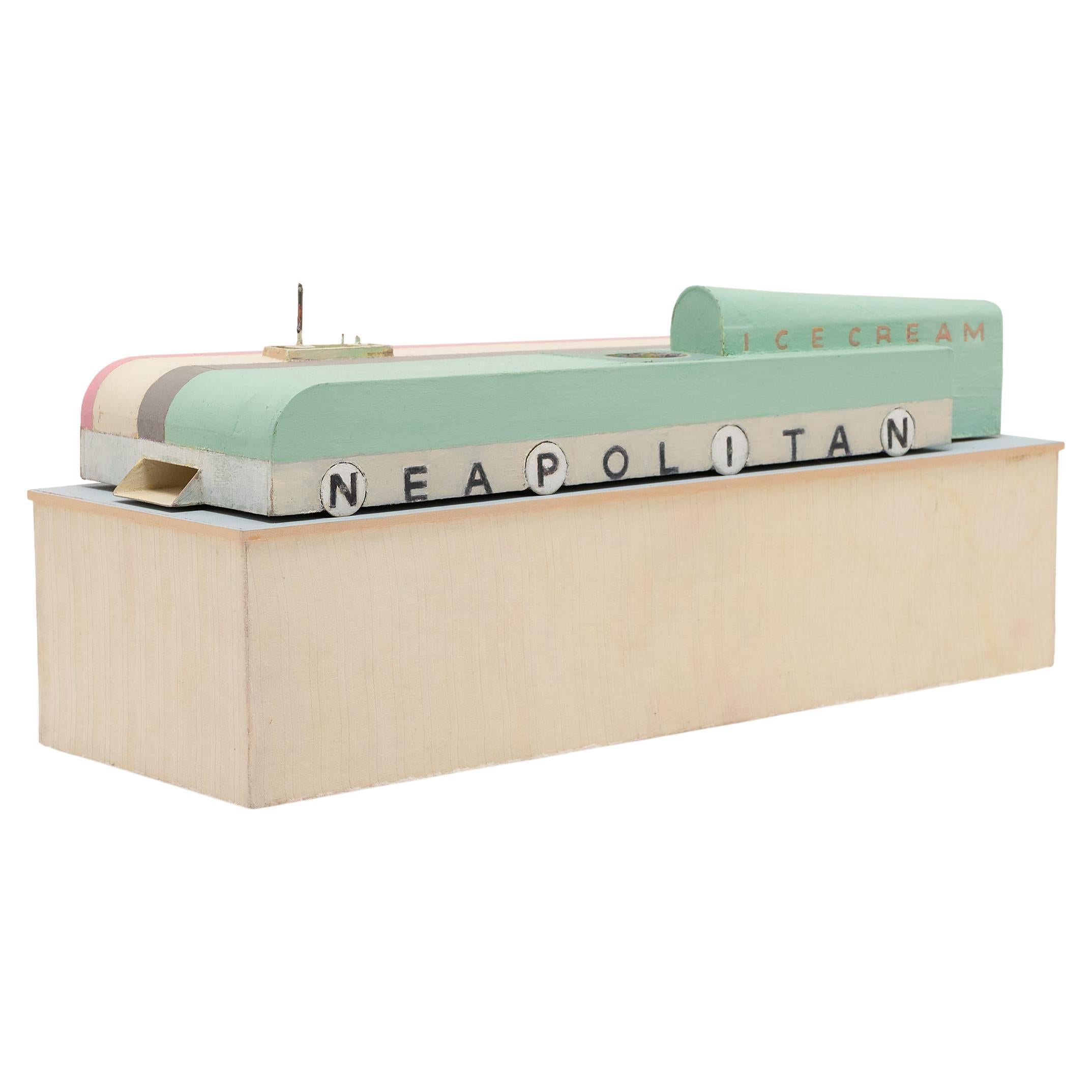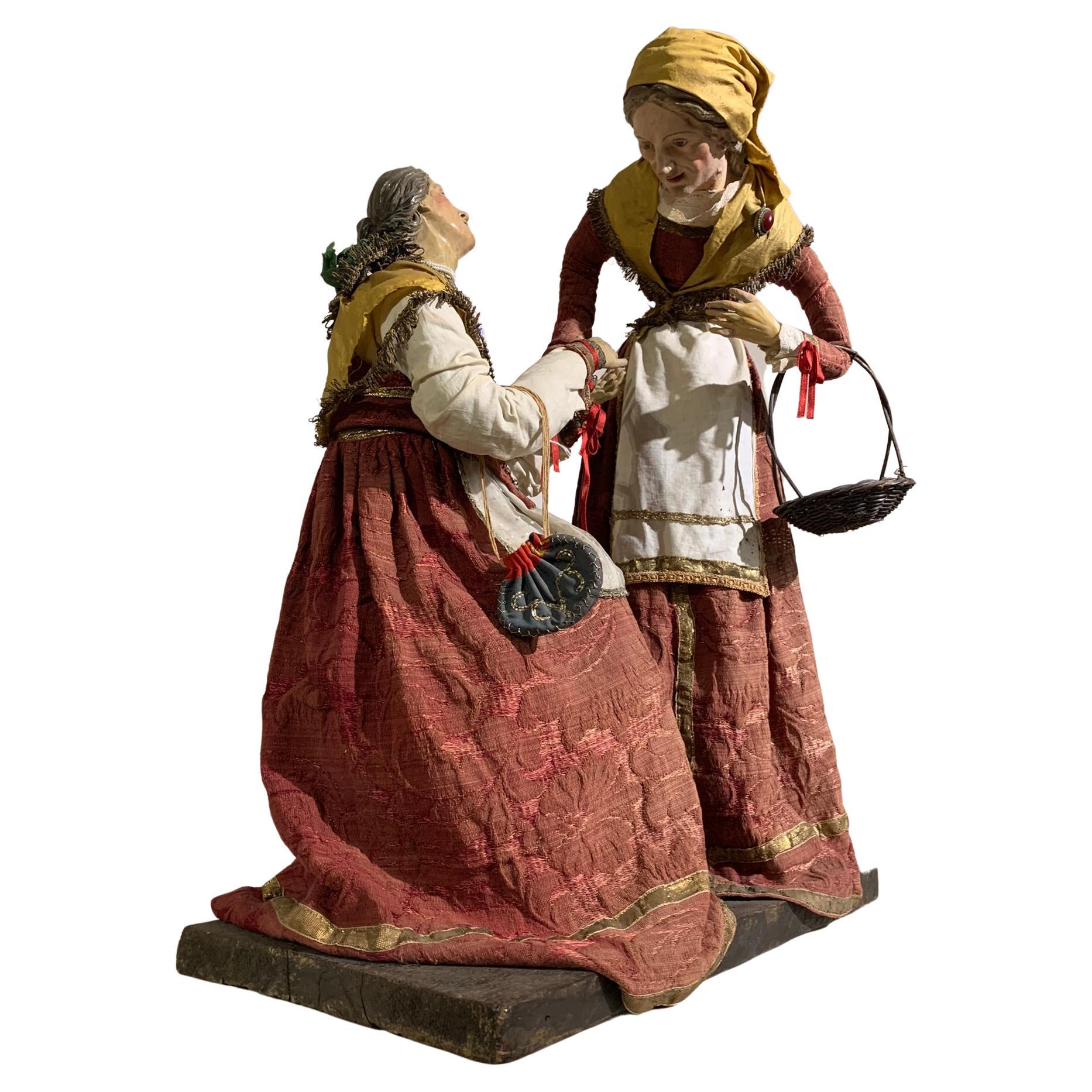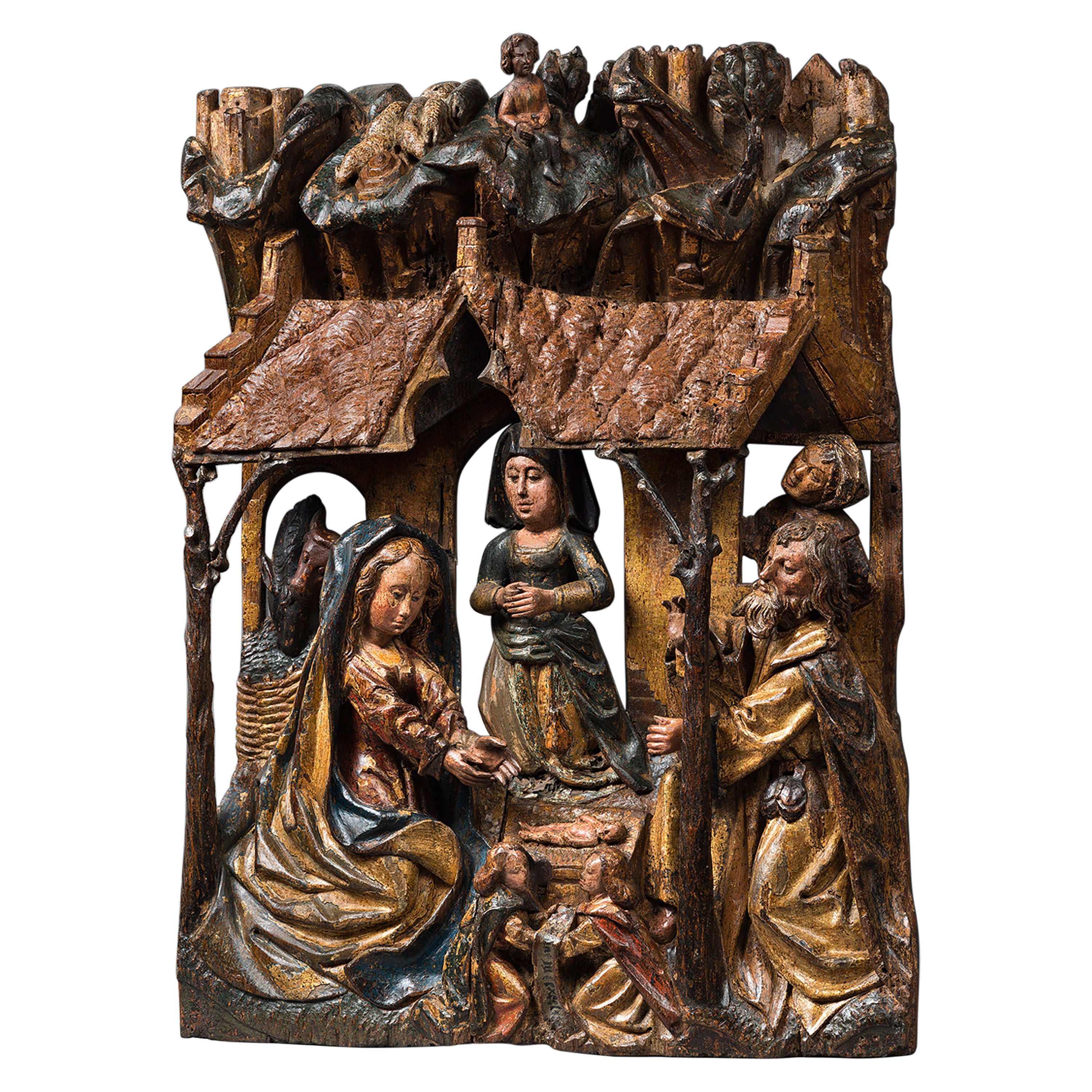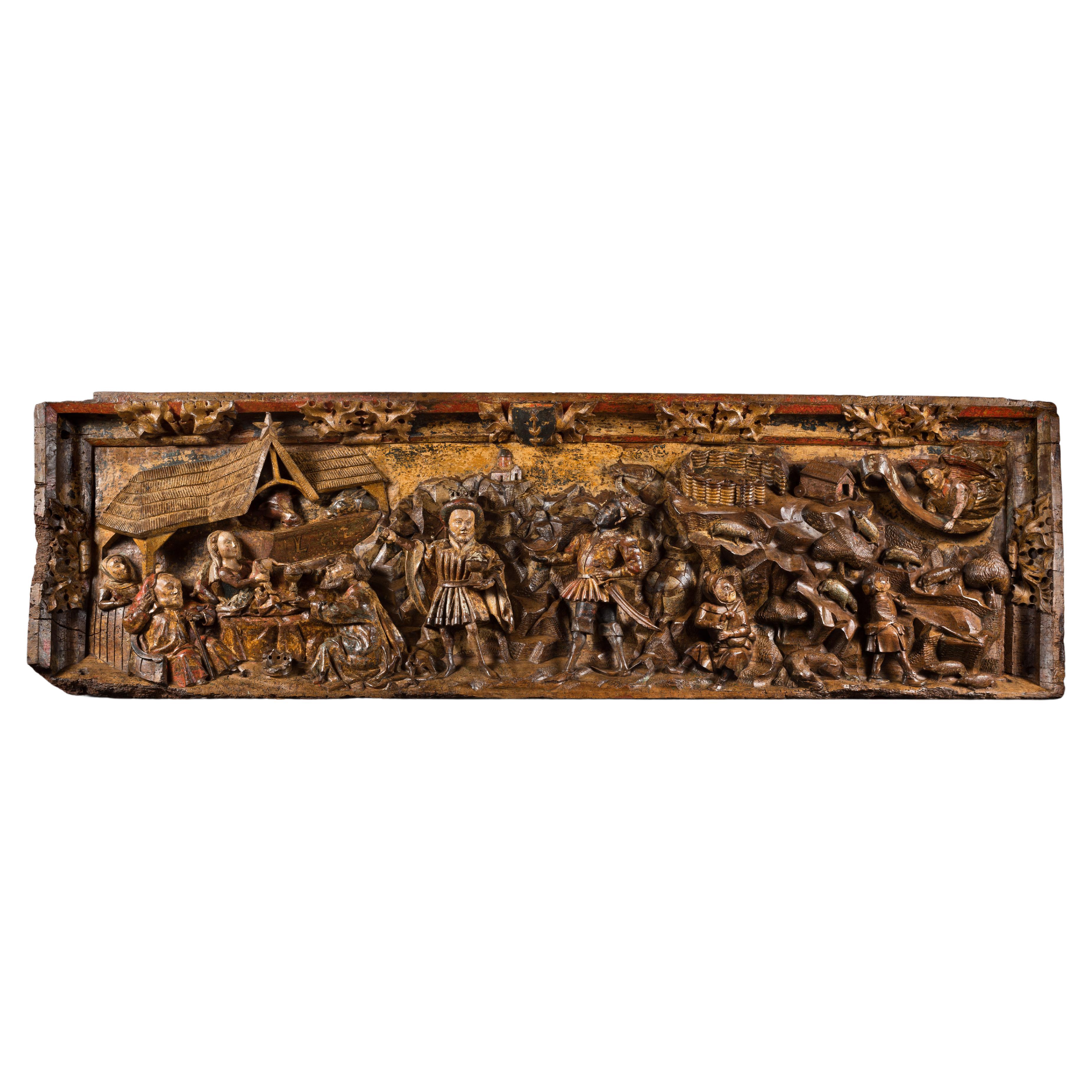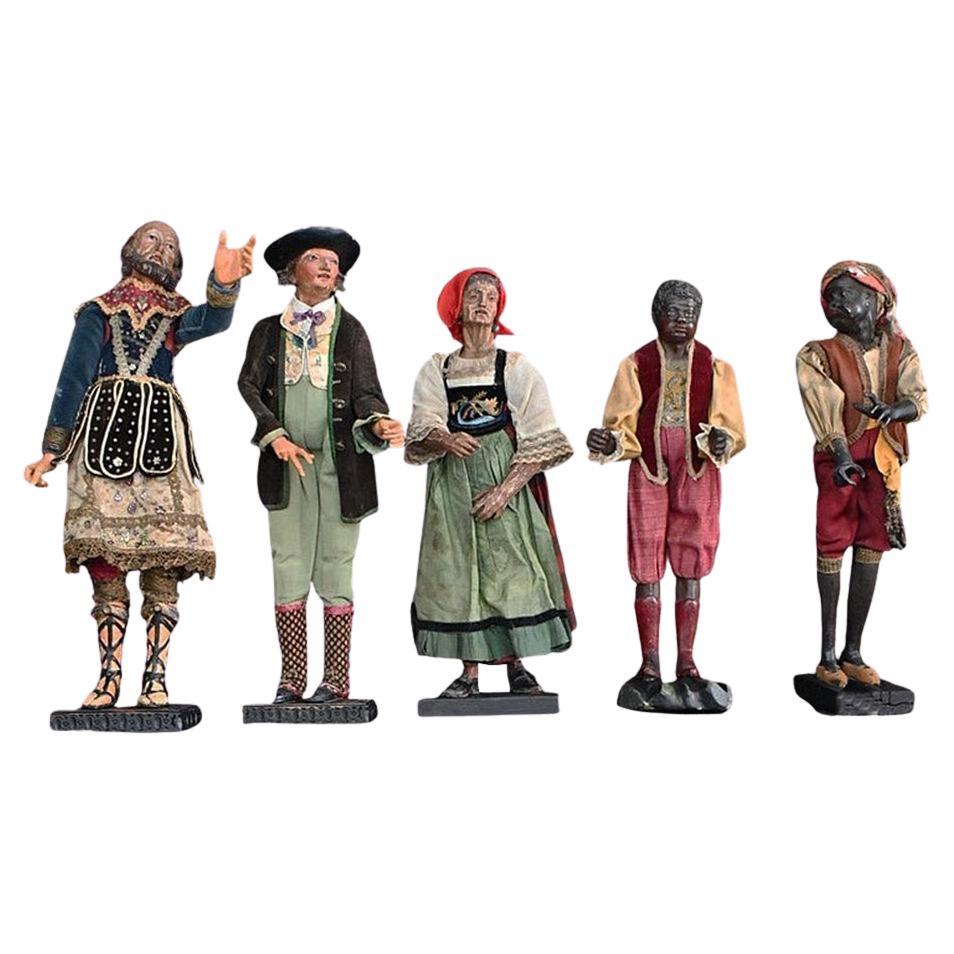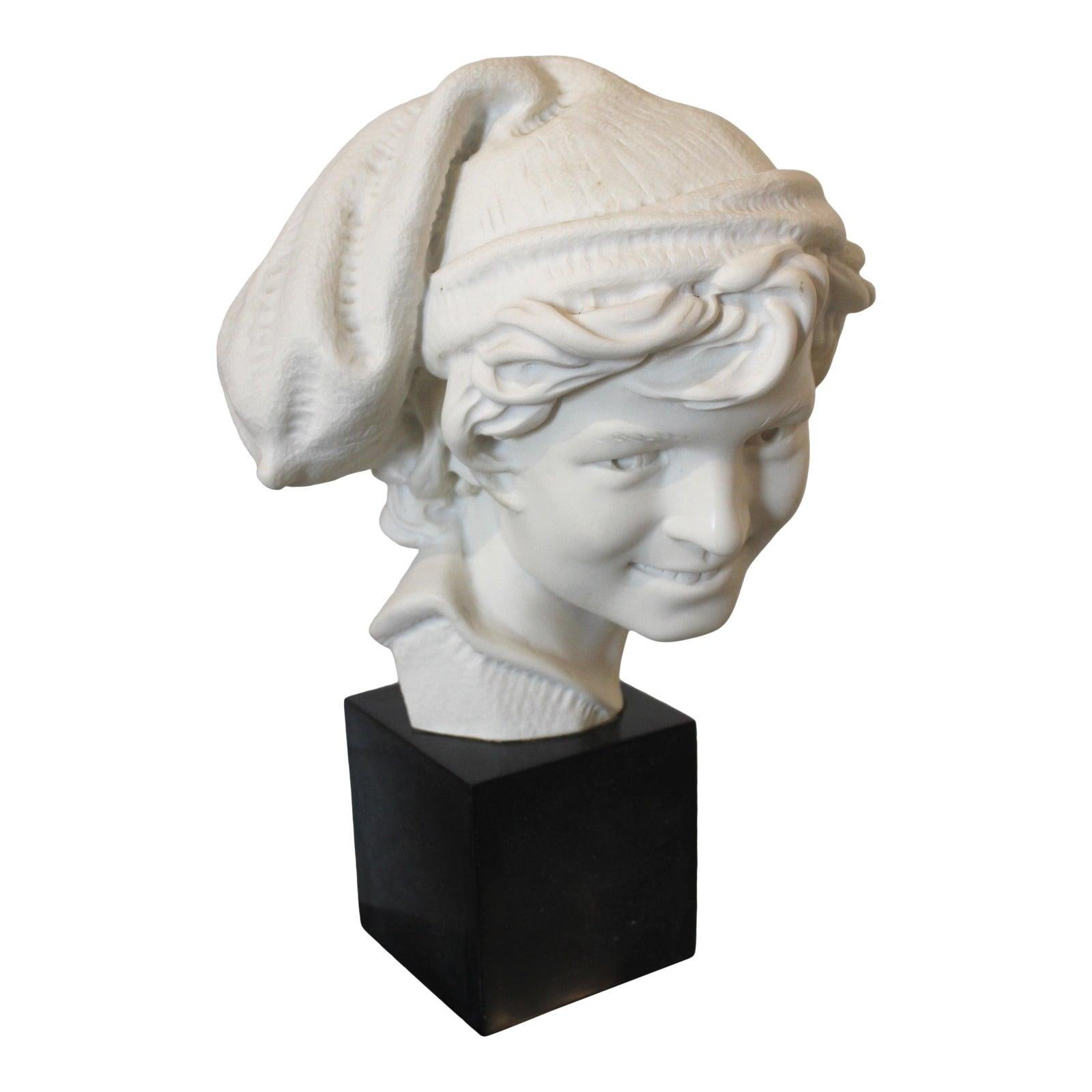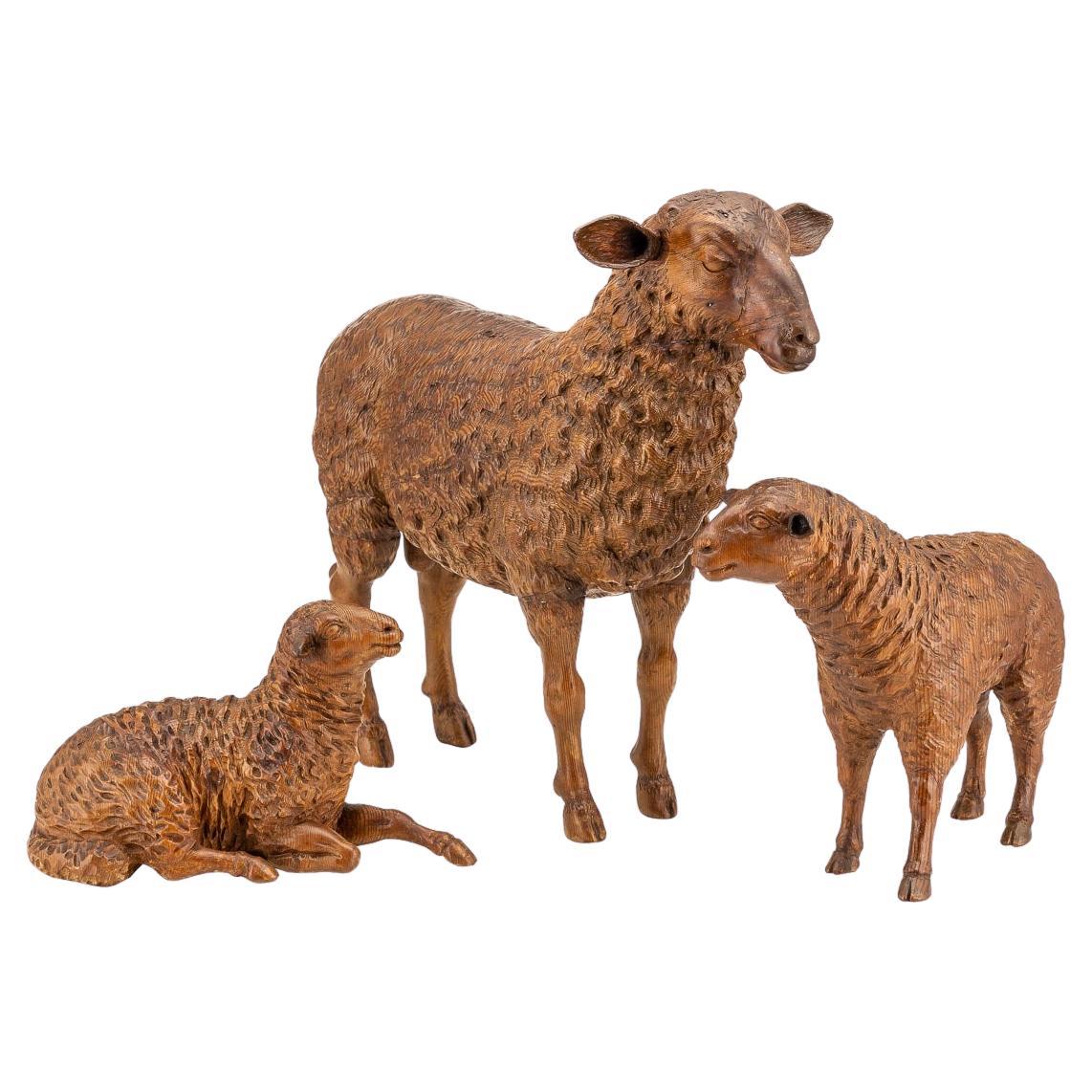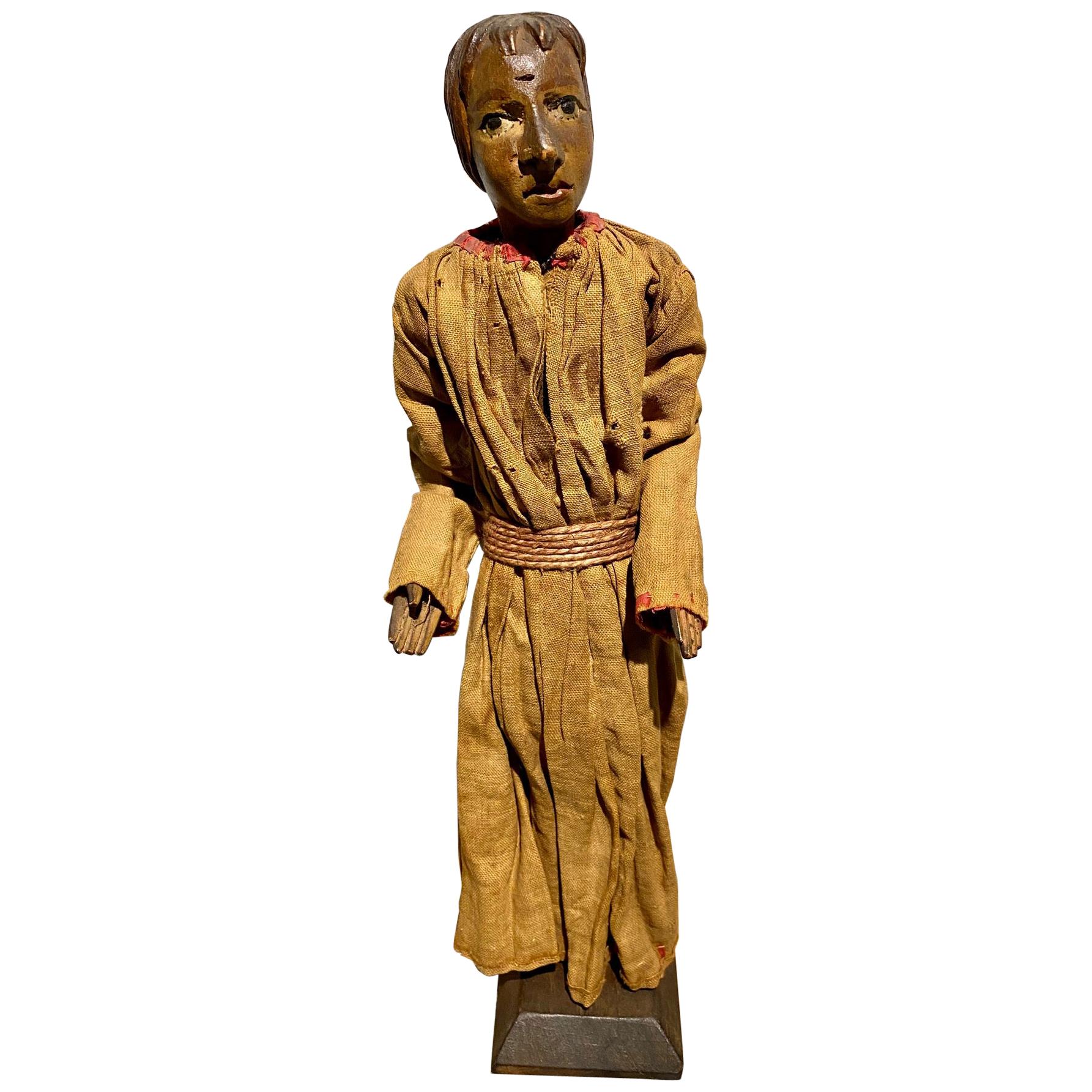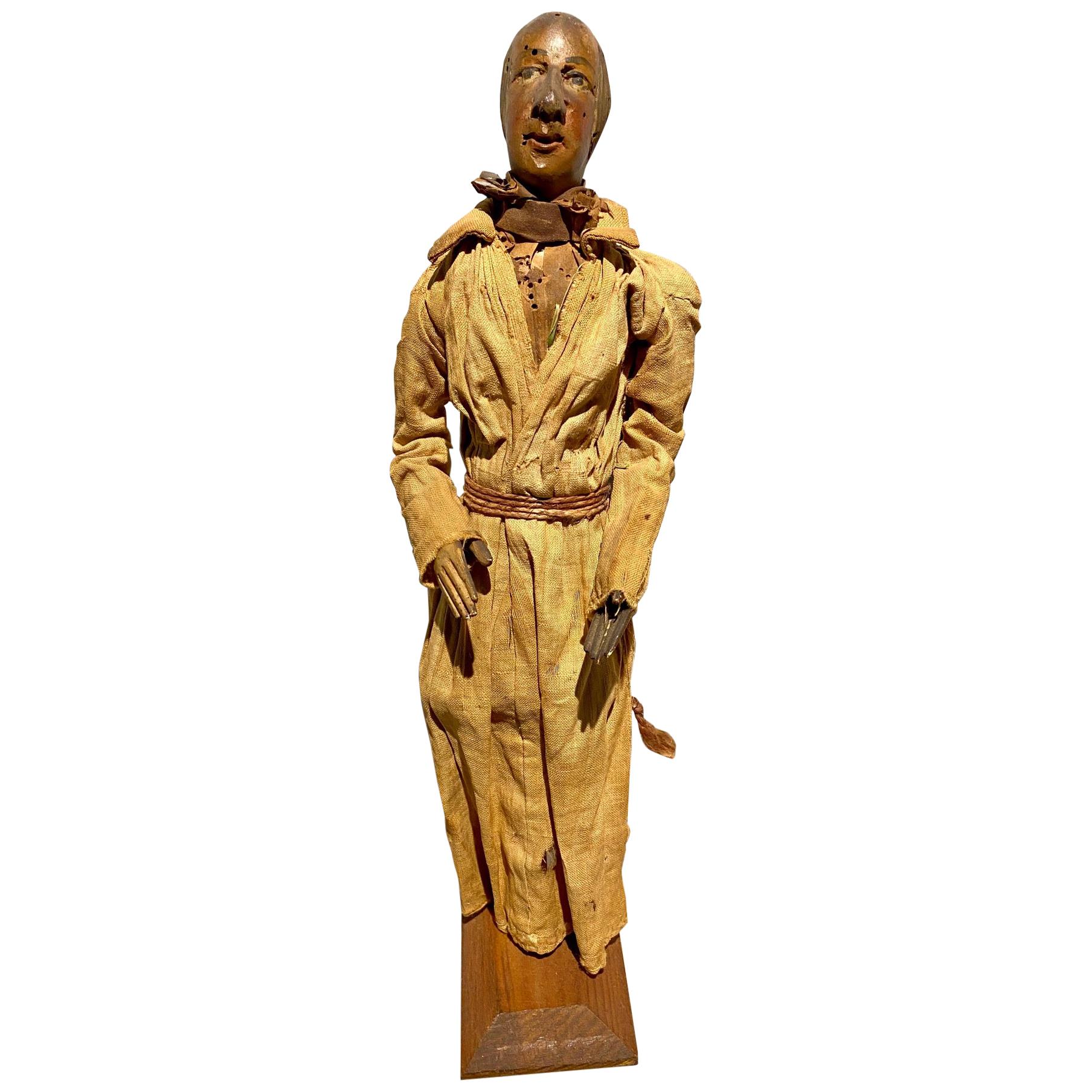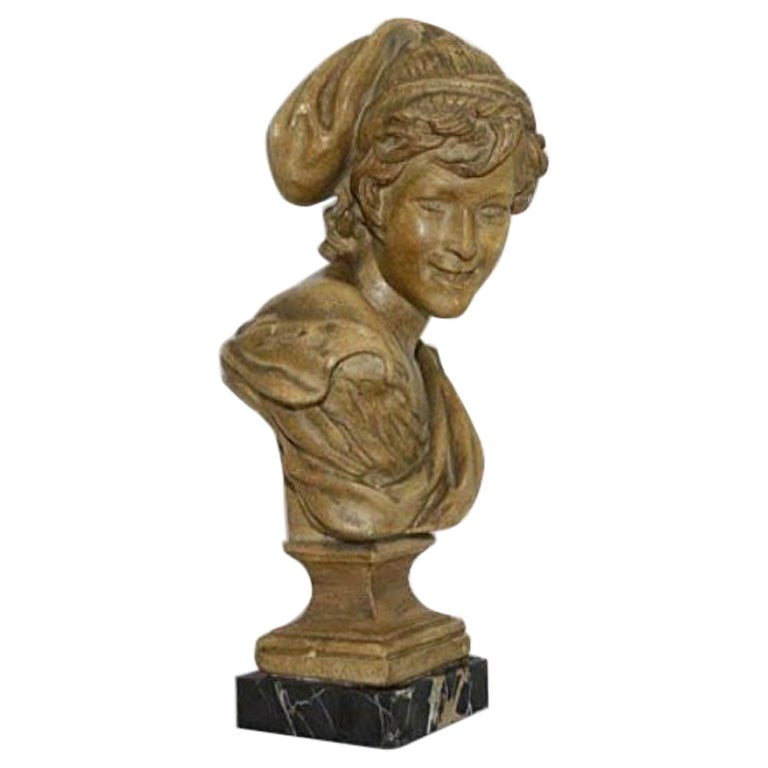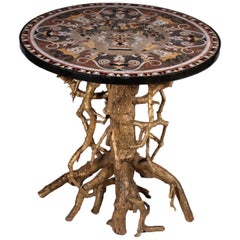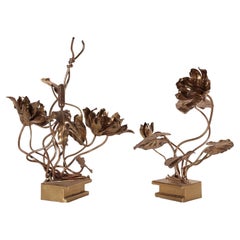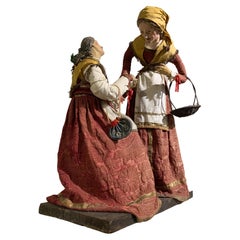
Neapolitan Nativity
View Similar Items
Want more images or videos?
Request additional images or videos from the seller
1 of 10
Neapolitan Nativity
About the Item
- Dimensions:Height: 46.66 in (118.5 cm)Width: 33.47 in (85 cm)Depth: 20.48 in (52 cm)
- Style:Other (Of the Period)
- Materials and Techniques:
- Place of Origin:
- Period:
- Date of Manufacture:1800s
- Condition:Wear consistent with age and use.
- Seller Location:Milano, IT
- Reference Number:1stDibs: LU1721226542522
About the Seller
4.9
Gold Seller
These expertly vetted sellers are highly rated and consistently exceed customer expectations.
Established in 2015
1stDibs seller since 2015
358 sales on 1stDibs
Typical response time: 1 hour
More From This SellerView All
- Neapolitan Commesso TableLocated in Milano, ITThe support consists of a structure made using a central trunk that serves as a balustrade, assembled together with other branches of smaller size; completely golden. The round top i...Category
Antique 19th Century Italian Other Tables
MaterialsMarble
$7,883 Sale Price40% Off - Lu Xing Porcelain Figur China XX Century, China Period of the Republic 1925-1935Located in Milano, ITLu Xing porcelain figure depicted in a long and rich robe and holding a Ruyi scepter in his left hand. The statue is decorated with polychrome enamels with a w...Category
20th Century Chinese Other Figurative Sculptures
MaterialsPorcelain
$3,328 Sale Price20% Off - Pair of Maison Jansen Style SculpturesLocated in Milano, ITPair of brass sculptures with flowers and leaves. In the manner of Maison Jansen.Category
Vintage 1970s Italian Other Abstract Sculptures
MaterialsBrass
$2,217 Sale Price / set25% Off - Bust of Baron Antonio NegriLocated in Milano, ITBust of a nobleman in white marble signed and dated 1837. The portrayed is the Baron Antonio Paolo Negri. The bust has a celebratory character, as per the customs of the time and the...Category
Antique 19th Century Italian Other Busts
MaterialsMarble
$21,351 - Sculpture Saint Crispin Lacquered and Engraved Wood, Italy \'700Located in Milano, ITSculpture depicting a standing male character, in a dynamic pose, which rests his on the right leg, the opposite one slightly advanced, to create an evenment that makes the body assu...Category
Antique 18th Century Italian Other Figurative Sculptures
MaterialsStone
- Male Bust Marble Italy 1838Located in Milano, ITMale bust in white marble, signed and dated “G. EMANUELI F. / 1838 \". The sculpture depicts a man with a voluminous ring-shaped tuft above his high forehead...Category
Antique 19th Century Italian Other Busts
MaterialsMarble
$16,424
You May Also Like
- Female Sculpture in Bronze from the Neapolitan SchoolLocated in bari, ITLa Paesana bronze statuette Neapolitan school, early 1900.Category
Antique Early 1900s Italian Other Figurative Sculptures
MaterialsBronze
- "Neapolitan Car" by Patrick FitzgeraldBy Patrick FitzgeraldLocated in Chicago, ILTo Chicago-based artist Patrick Fitzgerald, his miniature car sculptures are a means of traveling through time. Born from a fascination with the soap box derby...Category
21st Century and Contemporary American Figurative Sculptures
MaterialsFabric, Wood, Paper
- 18th Century, Napolitan Nativity SculpturesLocated in Firenze, FIBeautiful pair of large church crib sculptures in wood and painted terracotta with glass eyes depicting a peasant girl helping a beggar woman, typical Nea...Category
Antique Late 18th Century Figurative Sculptures
MaterialsTerracotta, Wood
$1,751 / set - Late 15th Century Polychrome Wood Carving Depicting the NativityLocated in Saint-Ouen, FRWhile the birth of Christ is briefly told in the Gospel of Luke (2, 7) it is in the apocryphal texts that we find most of the elements and details that have then inspired artists. As of the 14th century and even more of the 15th century the subject of the Adoration of the Child replaces in Western art the scene of the Birth, much favoured in Byzantine art. Instead of being depicted lying with the new-born swathed in the manger, the Virgin is now kneeling, her hands joined in prayer in front of the naked child. This change was probably hastened by the popularity of the visions of Saint Bridget of Sweden to whom the Virgin allegedly appeared to show how she had given birth to Jesus (Visions, VII, chap. 21). Sheltered by a thatch-roofed structure the Virgin is kneeling in front of the Child Jesus. She wears a magnificent red dress under a large gold cloak. Her curled blond hair is partially veiled. The newborn is lying on a straw mat. Joseph is depicted with a parted beard and stands opposite from the Virgin. He wears a tunic and a coat with a purse hanging from the belt. His costume reminds us of the long journey him and Mary have accomplished to reach Bethlehem. Two other women are present. One is looking through the stable’s window to observe the Holy Family while another one kneels in prayer in front of the divine child. The rich costume of the lady might indicate she is a donator. However they could also both represent the women who took part in the birth of Christ, Zelemi and Salome. Salome, incredulous did not believe in the virginal conception of Mary and she is represented far from the scene. The artist has depicted her with an expression of doubt on her face. Zelemi, on the contrary, is a believer. She is rewarded by a place of honour at the heart of the scene, close to Mary. To the left the donkey and ox that have accompanied Mary and Joseph to Bethlehem observe quietly the scene. On the foreground two angels hold a scroll reading an excerpt from the Gloria : “/Gloria/ in excelsis /Deo/.” One of the angels wears a blue cape while the other’s is red Those two colours are very significant as during Middle-Ages blue symbolises hope and red charity. Together they express the hope in redemption thanks to the advent of Christ and his sacrifice to come. Above the main scene, up a cliff, a small shepherd lets his herd of sheep graze amidst the trees. He is framed by two walled cities. This wood carving is the work of a very skilled and inventive artist. The piece bears witness to his exceptional talent. The realism of the scene is emphasised by the amount of details depicted. The refinement of the carving itself is highlighted by the well preserved polychromy. This key moment of the New Testament is set in a contemporary context thanks to the clothes of the characters and the scenes of rural life. The universal dimension of the scene is intensified while allowing contemporary viewers to grasp its meaning more easily. This care for details, the picturesque realism as well as the extraordinary rendition of the cloths suggest it was made by a Flemish artist during the late 15th century. This relief can be compared with the panel of the Nativity from the Saint-Vaast altarpiece made by Jacques Daret between 1433 and 1435, today in Madrid’s Thyssen-Bronemisza Museum. Literature Louis Réau, Iconographie de l’Art chrétien...Category
Antique 15th Century and Earlier Dutch Gothic Figurative Sculptures
MaterialsWood
- 15th Century Burgundian Low-Relief Depicting Scenes of the NativityLocated in Saint-Ouen, FRProvenance : In the same private collection for several generations, Burgundy. The canonical Gospels describe briefly the episode of the Nativity. It comprises three parts : • The Preludes : the Journey to Bethlehem, the Census • The Nativity • The Announce to the Shepherds and the Adoration of the Magi Only the Gospel according to Matthew (2, 1-12) speaks about the Adoration of the Magi. Staying vague about their number it does say they brought the newborn gold, incense and myrrh. The apocryphals, the fathers of the Church and many other authors have filled in the gaps of the evangelic tale. The sobriety and symbolic of the story have been a huge inspiration to artists. Although one of the oldest depictions of the Adoration of the Magi dates from the 2nd century the theme became very popular in Christian art during the late 14th century. One of the reasons explaining this success is that it celebrates both the Virgin and Christ at the same time. This important walnut panel is carved in a strong relief and depicts the different steps of the story of Jesus’ birth. On the left, the donkey and ox that have accompanied Mary and Joseph from Bethlehem are depicted behind a trough. On the thatch roof appears the star that would guide the magi to the place of birth of Jesus. Mary is wearing a veil and is seating on a bed. She holds her baby at arm’s length to present him to the magi. Saint Joseph is by her side. The old man is holding a cane in his left hand while from the right hand he seems to uncover himself to greet the visitors. A woman assists to the scene. In front of the holy family the three magi stand behind one another to pay their homage to the newborn. The first magi has a pointed beard. He is already kneeling out of deference and has placed his crown to his feet. He gives the baby a hanap filled with gold coins. This is Melchior as the legend describes him with white hair and a long beard. Caspar, the second magi bears a cup of incense. He is looking at the third magi and with his right hand he points to the star that has guided them there. He has a short beard and wears crakow shoes, breeches and a wide sleeved doublet. Finally Balthazar, the elegant last magi proceeds proudly towards the holy family with his one hand on the saber’s hilt and the other holding a cup. He brings the divine child the myrrh. He probably just dismounted as the horse can be seen behind him. The scene is set in a very detailed and narrative decor. In the right part of the panel the shepherd receive the announce of Jesus’ birth. An angel comes down from heaven with a scroll bearing the good news in his hands. The herding dog sleeps peacefully while sheeps graze. At the top of the cliff we notice the gilded sheeps enclosure. The panel’s moulded frame is carved with a foliated decor. In it’s centre appears a coat-of-arms. It is the alliance of the three magi’s arms. Indeed as it was common for legendary figures the three of them received imaginaries coat-of-arms. Thus, on a field of azure stands a star for Melchior, a crescent for Caspar and a pennon for Balthazar. This high-relief panel is undeniably the work of a very skilled and imaginative artist. This key moment in the New Testament is transposed to a contemporary environment thanks to the figures’ clothing and the rural daily life scene. This way the universal dimension of the episode is highlighted allowing a better understanding for the contemporaries. The sculptor has represented the episodes of the Adoration of the Magi and the Announce to the Shepherd with great talent and numerous details giving life to a picturesque and narrative scene. The important traces of polychromy give those already very animated scenes a stronger pictorial power and a rich dynamism. Because of the picturesque and familiar realism so dear to the artists of the late Medieval era, of the didactic function of this type of panel as well as the quality of the sculpture this piece is an astounding example of Burgundian art of the 15th century. Literature Louis Réau, Iconographie de l’Art chrétien...Category
Antique 15th Century and Earlier French Gothic Figurative Sculptures
MaterialsWalnut
- "The Nativity" Italian sculpture signed by Giuseppe ArmaniLocated in Cincinnati, OH"The Nativity" Italian sculpture signed by G. Armani The piece is mounted on a wood base with a brass plate "G. Armani" The back is marked 1983 Florence and also an "N" with a crown ...Category
Vintage 1980s Italian Figurative Sculptures
MaterialsPorcelain, Wood
Recently Viewed
View AllMore Ways To Browse
Nativity Scene
Antique Nativities
Antique Nativity
Nativity Scene Used
Papier Mache Italian
Gilded Mache
Terracotta Angel
Italian Paper Mache
Nativity Sculpture
Wood Nativity
Italian Nativity
Straw Cloth
Antique Nativity Scene
Antique Nativity Scenes
Nativity Scene Antique
Holy Family Wood
Papier Mache Vase
Antique Angel Fabric
